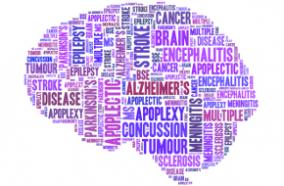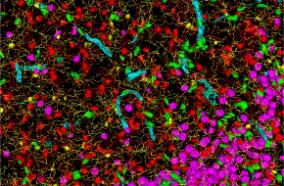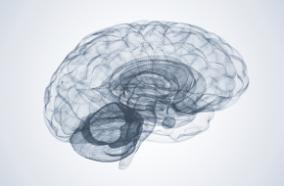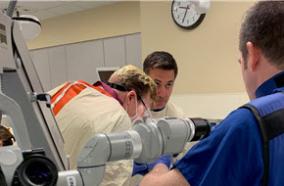4 years 3 months ago
CONCLUSIONS: The findings suggest a need to understand sociodemographic variables and their influence on participant attrition in longitudinal TBI research. With a better understanding of these predictors, procedures can be developed to address retention of participants who are identified as being at increased risk for study drop out.
Leia Vos
4 years 3 months ago
CONCLUSIONS: Alcohol Symptom Checklists used in routine care discriminated AUD severity consistently with current definitions of AUD and performed equitably across age, sex, race, and ethnicity. Integrating symptom checklists into routine care may help inform clinical decision-making around diagnosing and managing AUD.
Kevin A Hallgren
4 years 4 months ago
Oil spills in the subarctic marine environment off the coast of Labrador, Canada, are increasingly likely due to potential oil production and increases in ship traffic in the region. To understand the microbiome response and how nutrient biostimulation promotes biodegradation of oil spills in this cold marine setting, marine sediment microcosms amended with diesel or crude oil were incubated at in situ temperature (4°C) for several weeks. Sequencing of 16S rRNA genes following these spill...
Sean M C Murphy
4 years 4 months ago
Emerging evidence suggest WHO grade III meningiomas that arise de novo as opposed to dedifferentiating from a lower grade may harbor differing prognoses. To investigate this, a single institution retrospective analysis of prospectively acquired patients between 1999 and 2018 was performed. Clinical data and radiographic parameters were reviewed to calculate progression free survival and overall survival in patients undergoing microsurgical resection. Next generation targeted sequencing of...
Jacob Ruzevick
4 years 4 months ago
Paragangliomas are extra-adrenal catecholamine-secreting neuroendocrine tumors that can present with adrenergic signs and symptoms. The urinary bladder is a rare location for a paraganglioma, and these tumors must be distinguished from other more common bladder neoplasms. In this case report, we discuss a 59 year-old woman who initially presented with tachycardia, palpitations, chest tightness, shortness of breath, and weight loss. Laboratory evaluation showed significantly elevated...
Andrew Ko
4 years 4 months ago
Latrophilins (LPHNs) are adhesion G protein-coupled receptors with three isoforms but only LPHN3 is brain specific (caudate, prefrontal cortex, dentate, amygdala, and cerebellum). Variants of LPHN3 are associated with ADHD. Null mutations of Lphn3 in rat, mouse, zebrafish, and Drosophila result in hyperactivity, but its role in learning and memory (L&M) is largely unknown. Using our Lphn3 knockout (KO) rats we examined the cognitive abilities, long-term potentiation (LTP) in CA1, NMDA receptor...
Samantha L Regan
4 years 4 months ago
This study aims to explore the psychosocial factors and challenges affecting the lives of those who wear an ocular prosthesis following a traumatic eye injury. Thematic analysis of semi-structured interviews with eight individuals resulted in five themes: emotional devastation in the aftermath; moving forward; fear of negative social evaluation; keeping it normal - protecting self and close others; and threat of injury & blindness. Enucleation or evisceration of an eye causes significant...
Joni Keys
4 years 4 months ago
No abstract
Michael D Williams
4 years 4 months ago
CONCLUSIONS: The majority of patients with moderate to severe TBI received either phenylephrine or norepinephrine as first-line agents for blood pressure support following brain injury. Initial choice of norepinephrine, compared with phenylephrine, was not associated with improved clinical or functional outcomes.
Camilo Toro
4 years 4 months ago
Mismatch repair protein deficiency occurs in 0.8-2% of pancreatic ductal adenocarcinomas and confers susceptibility to immunotherapy. Herein, we report the case of a patient with Lynch syndrome-associated, locally advanced mismatch repair protein deficiency pancreatic ductal adenocarcinomas who demonstrated a sustained response to second-line treatment with pembrolizumab, but eventually developed immune-related diabetic ketoacidosis requiring discontinuation of treatment. He has since remained...
Erica S Tsang
4 years 4 months ago
Public libraries in the United States have begun to partner with social work to address the psychosocial needs observed in patrons that are beyond the training and education of most library staff. This is a new area of inquiry with limited research available. Of the few published studies, the majority focus on staff perceptions of patrons' needs and surveys of patrons experiencing homelessness about their use of public libraries. The present study is the first to examine and compare staff...
Elizabeth A Wahler
4 years 4 months ago
Understanding mechanisms of hepatocellular damage may lead to new treatments for liver disease, and genome-wide association studies (GWAS) of alanine aminotransferase (ALT) and aspartate aminotransferase (AST) serum activities have proven useful for investigating liver biology. Here we report 100 loci associating with both enzymes, using GWAS across 411,048 subjects in the UK Biobank. The rare missense variant SLC30A10 Thr95Ile (rs188273166) associates with the largest elevation of both enzymes,...
Lucas D Ward
4 years 4 months ago
Biomaterials contact directly or indirectly with the human tissues, making it important to evaluate its cytotoxicity. This evaluation can be performed by several methods, but a high discrepancy exists between the approaches used, compromising the reproducibility and the comparison among the obtained results. In this paper, we propose a protocol to evaluate biomaterials cytotoxicity using soluble extracts, which we use for dental biomaterials. The extracts preparation is detailed, from pellets...
Anabela Baptista Paula
4 years 4 months ago
CONCLUSIONS: These findings suggest two groups of patients with brainstem injuries may exist with divergent recovery potential after TBI. These data support the notion that newer CT imaging classification systems may augment traditional clinical measures, such as GCS in identifying those patients with TBI and brainstem injuries that stand a higher chance of favorable outcome.
John R Williams
4 years 4 months ago
BACKGROUND: Genetic data implicate IL-33 in asthma susceptibility. Itepekimab, a monoclonal antibody targeting IL-33, demonstrated clinical activity in asthma, with potential in chronic obstructive pulmonary disease (COPD). In this study we first aimed to test the hypothesis that genetic variants in the IL-33 pathway were also associated with COPD. On the basis of the strong association of IL-33 pathway genes with pulmonary diseases like asthma and COPD, we conducted this phase 2a trial to...
Klaus F Rabe
4 years 4 months ago
The occlusal matrix technique appears as an alternative to the conventional restorative technique. The aim of this study is to present treatment options for the decayed occlusal surface of posterior teeth by means of an occlusal matrix made with different materials, for an accurate reproduction of the tooth surface. This paper presents five clinical cases using five different materials, such as Bite-Perf, flowable composite, self-curing acrylic resin, silicone and thermoforming foil. Before...
Elsa Reis Carneiro
4 years 4 months ago
OBJECTIVE: To evaluate the safety and effectiveness of the Flow Redirection Endoluminal Device (FRED) flow diverter in support of an application for Food and Drug Administration approval in the USA.
Cameron G McDougall
4 years 4 months ago
CONCLUSION: Endovascular treatment, and in particular, flow diversion for DACAA, is safe, feasible, and associated with good long-term angiographic and clinical outcomes.
Guilherme B F Porto
4 years 4 months ago
The apparent convergence of psychology and brain science has been the subject of both celebration and critique, but it has never been systematically charted. We examined historical trends in the representation of neuroscientific concepts in a corpus of 798,402 psychology journal articles published over the past half century, from 1965 to 2016. A dictionary of 522 uniquely neuroscience-related terms was developed, and the percentage of article abstracts in which at least one term appeared was...
Nick Haslam
4 years 4 months ago
The National Institutes of Health-National Institute of Neurological Disorders and Stroke (NIH-NINDS) Traumatic Brain Injury (TBI) Imaging Common Data Elements (CDE) are standardized definitions for pathological intracranial lesions based on their appearance on neuroimaging studies. The NIH-NINDS TBI Imaging CDEs were designed to be as consistent as possible with the FDA definition of biomarkers as "an indicator of normal biological processes, pathogenic processes, or biological responses to an...
Sandra P Rincon
"university of washington"[affiliation] and neurological surge...: Latest results from PubMed
More posts about UW Neurological Surgery Recent PubMed Publications



















